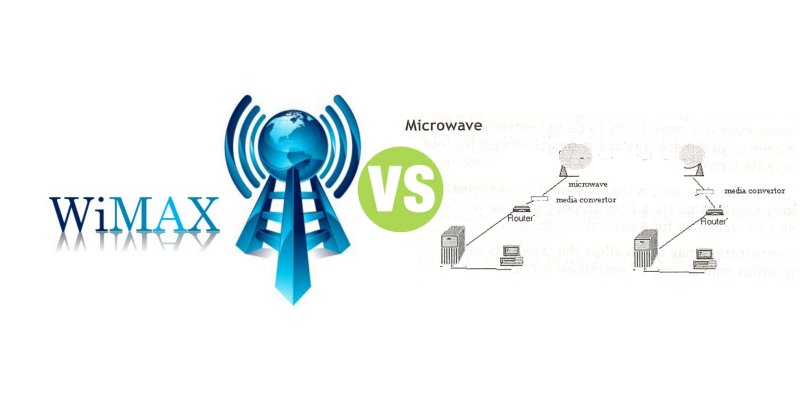WiMAX vs Microwave
Summary: Difference Between WiMAX and Microwave is that WiMAX (Worldwide Interoperability for Microwave Access), also known as 802.16, is a newer network standard developed by IEEE that specifies how wireless devices communicate over the air in a wide area. Using the WiMAX standard, computers or devices with the appropriate WiMAX wireless capability communicate via radio waves with other computers or devices via a WiMAX tower. While Microwaves are radio waves that provide a high-speed signal transmission. Microwave transmission, often called fixed wireless, involves sending signals from one microwave station to another. Microwaves can transmit data at rates up to 4,500 times faster than a dial-up modem.

WiMAX
WiMAX (Worldwide Interoperability for Microwave Access), also known as 802.16, is a newer network standard developed by IEEE that specifies how wireless devices communicate over the air in a wide area. Using the WiMAX standard, computers or devices with the appropriate WiMAX wireless capability communicate via radio waves with other computers or devices via a WiMAX tower. The WiMAX tower, which can cover up to a 30-mile radius, connects to the Internet or to another WiMAX tower.
Two types of WiMAX specifications are fixed wireless and mobile wireless. With fixed wireless WiMAX, a customer accesses the Internet from a desktop computer at home or other permanent location. Mobile wireless WiMAX, by contrast, enables users to access the WiMAX network with mobile computers and mobile devices such as smart phones.
The WiMAX standard provides wireless broadband Internet access at a reasonable cost over long distances to business and home users. WiMAX, similar to Wi-Fi, connects mobile users to the Internet via hot spots. Some game consoles also support the WiMAX standard.
Microwave
Microwaves are radio waves that provide a high-speed signal transmission. Microwave transmission, often called fixed wireless, involves sending signals from one microwave station to another. Microwaves can transmit data at rates up to 4,500 times faster than a dial-up modem. A microwave station is an earth-based reflective dish that contains the antenna, transceivers (which both send and receive signals from wireless devices), and other equipment necessary for microwave communications. Microwaves use line-of-sight transmission. To avoid possible obstructions, such as buildings or mountains, microwave stations often sit on the tops of buildings, towers, or mountains.
Microwave transmission is used in environments where installing physical transmission media is difficult or impossible and where line-of-sight transmission is available. For example, micro wave transmission is used in wide-open areas such as deserts or lakes; between buildings in a close geographic area; or to communicate with a satellite. Current users of micro wave trans mission include universities, hospitals, city governments, cable television providers, and telephone companies. Home and small business users who do not have other high-speed Internet connections available in their area also opt for lower-cost fixed wireless plans.
Also Read:
Difference Between Broadcast Radio and Microwave
Difference Between WiMAX and LTE
Difference Between WiMAX and 3G







Leave a Comment
You must be logged in to post a comment.